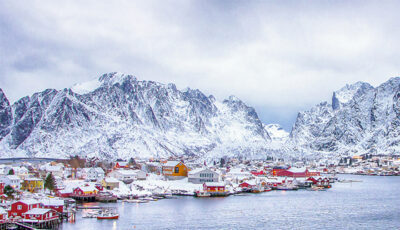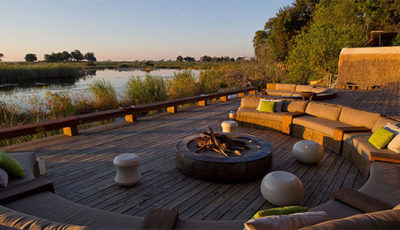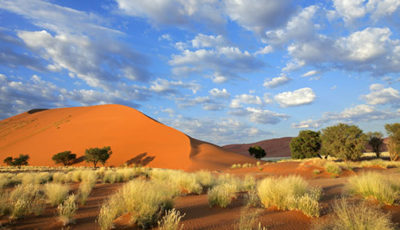Sample Itinerary
Day 1
ARRIVAL IN WINDHOEK
After landing at Windhoek’s International Hosea Kutako Airport, you will be welcomed by our representative who will transfer you to The Olive Exclusive where you will stay in great comfort on your first night in Namibia. After your arrival at the hotel you will have time to settle into your suite before dinner. Dinner tonight can be enjoyed at The Olive’s excellent and stylish in-house restaurant.
Windhoek, Namibia’s capital city is nestled amongst rolling hills, bounded by the Eros Mountains in the east, the Auas Mountains to the south and the Khomas Hochland in the west. It is a meeting place between Africa and Europe, the modern and the old. In the capital’s main street, well-preserved German colonial buildings are in sharp contrast with modern architectural styles, while Herero women in their traditional Victorian dresses mingle with executives dressed in the latest fashions. Centrally located within Namibia, Windhoek is an excellent starting point for an adventurous holiday for many visitors to the country and an ideal base from where to explore the rest of the country.
Olive Exclusive is a lovely new welcoming boutique hotel situated close to Windhoek’s city centre in the quiet, peaceful suburb of Eros. Nestled amongst an olive tree plantation, this new, luxurious hotel provides exclusive suite accommodation with beautiful views over the olive trees towards the Windhoek mountains. Accommodation is offered in premier suites or junior suites. Premier suites boast their own expansive balcony and plunge pool. All guests have access to a sparkling communal pool located amongst the olive grove. All suites have their own lounge area and dining room, giving guests the option of enjoying meals in their own room or of joining the other guests for meals at the main restaurant. The en-suite rooms offer all the added luxuries of satellite TV, iPod music system, fully-stocked mini-bar, premier wine selection, direct-dial telephone, air conditioner, hair-dryer, wall mounted safe, personal computer for internet access, complimentary wireless internet access, goose-down duvets, 100% cotton linen and style in abundance. Enjoy a drink on the extensive outdoor patio or in the Himba lounge before settling in to the innovatively furnished dining room, which offers a first class dining experience to guests. The overall feel is one of indulgent luxury, while still retaining a feel of simplicity and elegance.
The Olive All-Suite Hotel
Day 2
FLY FROM WINDHOEK TO NAMIBRAND NATURE RESERVE
This morning you will be collected at the hotel and transferred to Eros Airport where you will board a scheduled light aircraft flight to the NamibRand Nature Reserve. You will fly southwest over the Great Escarpment into the Namib Desert below. You land at Sossusvlei Desert Lodge where you will be met by a lodge representative and transferred to the lodge. Here you will stay for two nights whilst you explore the remarkable sights of the Namib Desert with your local lodge guide. If you arrive in time this afternoon you may like to join the afternoon guided excursion on the NamibRand Nature Reserve as run by the lodge. After dinner you can also take advantage of the telescope and the presence of the local astronomer at the lodge to do some advanced star gazing
The breathtaking NamibRand Nature Reserve begun as a conservation initiative in 1984 and now extends over 180,000 hectares of pristine Namib Desert, restoring land that was once used for Karakul sheep farming. The reserve shares a common border of nearly 100 km with the Namib-Naukluft National Park to the west, while the imposing Nubib mountain range forms a natural border to the east. The particular attraction of NamibRand is its diversity of different desert landscapes, representing virtually all facets of the Namib Desert. Expansive sand and gravel plains and endless stretches of grass savannah alternate with majestic mountain ranges and vegetated dune belts of deep red sand where the variety of flora and fauna is as fascinating as the colour nuances of the landscape, which change continuously as the day progress. Before NamibRand became a private nature reserve, it consisted of sheep farms, surveyed and allocated in the early fifties to ex-soldiers of World War II. Today visitors to the NamibRand can admire nature in its original state, as indigenous animals and plants are flourishing back where they belong.
Sossusvlei Desert Lodge, situated in the northern foothills of the NamibRand Nature Reserve, is designed to make the most of its breathtaking surroundings whilst providing a sophisticated and luxurious stay. The lodge consists of glass and stone curves, where walls and windows fold away completely to open out to the grassy plains, distant dunes, and mountain ranges. Each spacious, air-conditioned suite features a shaded deck, split level bedroom and living room with fireplace for cool evenings, en-suite glass encased bathroom and outdoor shower. Star gazing is a highlight with a star-viewing sky light in each room and an observatory with a powerful telescope. Guided activities on offer to explore the local reserve include scenic 4×4 nature drives, fascinating walks and exhilarating quad-biking excursions.
Overnight Sossusvlei Desert Lodge
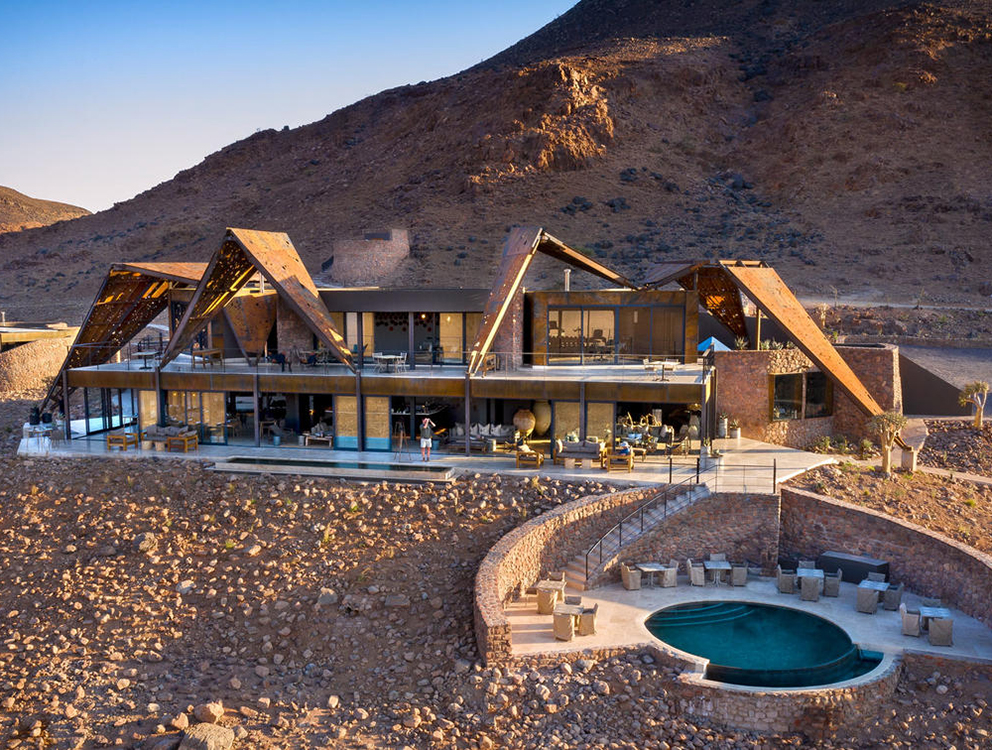

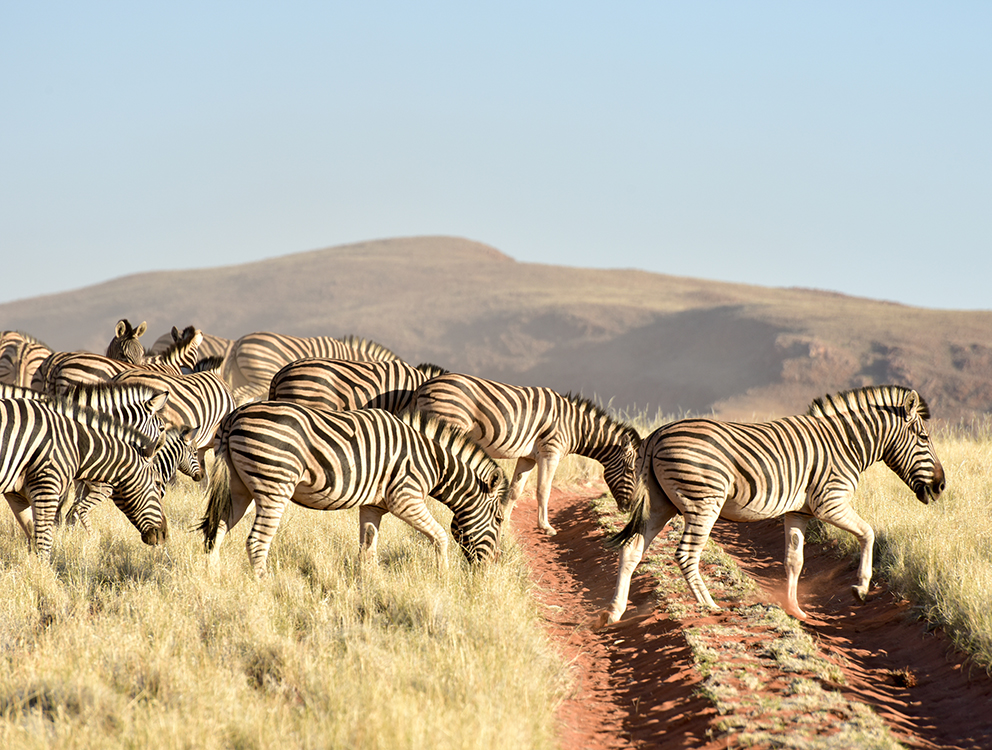
Day 3
SOSSUSVLEI
This morning you will rise early for a magical excursion with your local guide into the Namib Naukluft National Park, entering the Park gates at sunrise to capture the dunes whilst the light is soft and shadows accentuate their towering shapes and curves. This area boasts some of the highest free-standing sand dunes in the world. Your local guide will give you an insight on the formation of the Namib Desert and its myriad of fascinating creatures and plants that have adapted to survive these harsh environs. Once you have explored the area you can enjoy a relaxing picnic breakfast under the shade of a camel thorn tree. Return to Sossusvlei Desert Lodge in the early afternoon for a late lunch, stopping off to view Sesriem Canyon en route. The rest of the afternoon is at your leisure (from experience, this is usually welcomed after an exhilarating morning in the dunes) or can be spent on another guided activity on offer at the lodge.
The most frequently visited section of the massive 50,000 km² Namib Naukluft National Park has become known as Sossusvlei, famous for its towering apricot coloured sand dunes which can be penetrated by following the Tsauchab River valley. Sossusvlei itself is actually a clay pan set amidst these star shaped dunes which stand up to 300 meters above the surrounding plains, ranking them among the tallest dunes on earth. The deathly white clay pan contrasts against the orange sands and forms the endpoint of the ephemeral Tsauchab River, within the interior of the Great Sand Sea. The river course rises south of the Naukluft Mountains in the Great Escarpment. It penetrates the sand sea for some 55 km before it finally peters out at Sossusvlei, about the same distance from the Atlantic Ocean. Until the encroaching dunes blocked its course around 60,000 years ago, the Tsauchab River once reached the sea; as ephemeral rivers still do in the northern half of the Namib. Sand-locked pans to the west show where the river previously flowed to before dunes shifted its endpoint to where it currently gathers at Sossusvlei. Roughly once a decade rainfall over the catchment area is sufficient to bring the river down in flood and fill the pan. On such occasions the mirror images of dunes and camel thorn trees around the pan are reflected in the water. Sossusvlei is the biggest of four pans in the vicinity. Another, famous for its gnarled and ghostly camel thorn trees, is Deadvlei which can be reached on foot over 1 km of sand. Deadvlei’s striking camel thorn trees; dead for want of water, still stand erect as they once grew. They survived until about 900 years ago when the sand sea finally blocked the river from occasionally flooding the pan.
Sesriem Canyon has evolved through centuries of erosion by the Tsauchab River which has incised a narrow gorge about 1.5 km long and 30 meters deep into the surrounding conglomerates, exposing the varying layers of sedimentation deposited over millions of years. The shaded cool depths of the canyon allow pools of water to gather during the rain season and remain for much of the year round. These pools were a vital source of water for early settlers who drew water for their livestock by knotting six (SES) lengths of rawhide thongs (riems) together, hence the canyon and surrounding area became known as Sesriem.
Overnight Sossusvlei Desert Lodge
Day 4
FLY FROM SOSSUSVLEI TO DAMARALAND
After a leisurely breakfast you will transfer you to the lodge airstrip in time to board your scheduled light aircraft flight to Damaraland (stopping in Swakopmund to refuel). From Swakopmund you will take off and continue north and inland on your flight into the heart of Damaraland where you will spend two nights at Mowani Mountain Camp.
On landing at the Twyfelfontein airstrip you will be met by a Mowani vehicle and lodge representative who will transfer you to Mowani Mountain Camp, which is approximately a 15 minute transfer. The rest of the afternoon can be spent on a guided excursion to visit the rock engravings at Twyfelfontein (a World Heritage Site) and the interesting geological sites of Burnt Mountain and the Organ Pipes; alternatively you may like to simply relax or take a leisurely walk into the local area. We would recommend pre-dinner drinks on Mowani’s sundowner rock, a short stroll from the camp, for a stunning view of the sunset.
Strewn over a hillside amongst flat-topped mountains of red sandstone, Twyfelfontein’s boulders and slabs of red sandstone hold some 2,500 prehistoric engravings that depict wildlife, animal spoor and abstract motifs. It is perhaps the largest and finest collection of petroglyphs in Africa. The engravings show animals such as elephant, giraffe, kudu, lion, rhinoceros, springbok, zebra and ostrich that once used to drink from a fountain at the bottom of the hill. In some cases footprints were engraved instead of hooves or paws. The abstract motifs feature mainly circles. Stone tools and other artifacts found at Twyfelfontein suggest that hunter-gatherers occupied the site over a period of perhaps 7,000 years. These days a local guide accompanies visitors to showcase the rock art. The engravings lie along two circular routes, one an hour’s climb and the other 40 minutes longer. Twyfelfontein is one of Namibia’s key National Monuments and has recently become a UNESCO World Heritage Site.
A rounded hill located a few kilometers from Twyfelfontein and the Organ Pipes, known as the Burnt Mountain, seems to catch fire again at sunrise and sunset. Its fantastic range of colours at dawn and dusk are due to a chemical reaction that took place roughly 125 million years ago when molten lava penetrated organic shale and limestone deposits, resulting in contact metamorphism. In ordinary sunlight it is a dull black. Blackened rubble lies to one side like cinders from the original fire.
The Organ Pipes are another geological curiosity in the area consisting of a mass of perpendicular dolerite columns that intruded the surrounding rocks also about 125 million years ago and have since been exposed in a ravine due to river erosion.
Mowani Mountain Camp is ideally located a short drive from the local attractions in the area. The Camp is nestled amongst giant granite boulders, overlooking the ephemeral Aba Huab riverbed where desert adapted elephants often traverse. The thatch dome-shape structures echo the shape of the rough textured granite boulders amongst which they are built, a theme complemented by African wood carvings and artifacts. Mowani’s main complex consists of a reception area, bar, spacious alfresco dining room, lounge overlooking a waterhole and an inviting fireplace nearby to relax beside in the evenings. A refreshing swimming pool and fantastic sundowner viewpoint with its own bar also complement the Camp. Guests are accommodated in luxury East African style en-suite safari tents built on raised wooden platforms, each with a private verandah and splendid views over the Aba Huab valley.
Overnight Mowani Mountain Camp
Day 5
Damaraland
After an early breakfast you will be treated to morning Elephant / Nature drive along the ephemeral Huab and Aba Huab River valleys to explore this remarkable region and to search for game, including the elusive desert adapted elephants if they are in the area. Damaraland is home to a variety of desert adapted wildlife and hidden desert treasures. You will return to Camp for lunch and this afternoon relax and enjoy some well-deserved leisure time.
In habitats with sufficient vegetation and water an adult elephant consumes as much as 300kg of roughage and 230 litres of water every day of its life. Consider what a herd of them would eat and drink in a week or a month or a year. Finding an African elephant in a desert? Well, yes and not only elephant, but other large mammals as well, such as black rhinoceros and giraffe. Their ranges extend from river catchments in northern Kaokoveld as far south as the northern Namib. Apart from the Kunene River, seven river courses northwards from the Ugab provide them with possible routes across the desert, right to the Skeleton Coast. The biggest are the Hoarusib, the Hoanib, the Huab and the Ugab Rivers. Desert adapted elephant in Kaokoland and the Namib walk further for water and fodder than any other elephant in Africa. The distances between waterholes and feeding grounds can be as great as 68 km. The typical home range of a family herd is larger than 2,000km², or eight times as big as ranges in central Africa where rainfall is much higher. They walk and feed at night and rest during the day. To meet their nutritional and bulk requirements they browse on no fewer than 74 of the 103 plant species that grow in their range. Not a separate species or even a subspecies, they are an ecotype unique to Namibia in Africa south of the equator, behaviorally adapted to hyper-arid conditions. Elephant in Mali on the southwestern fringe of the Sahara Desert are the only others known to survive in similar conditions.
Overnight Mowani Mountain Camp
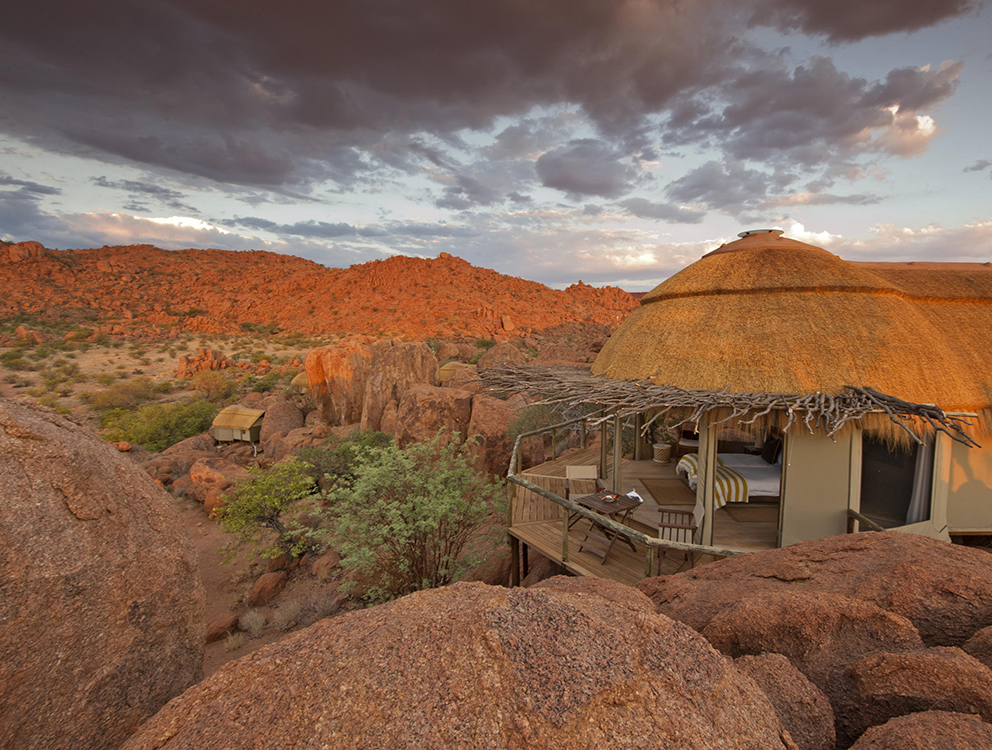
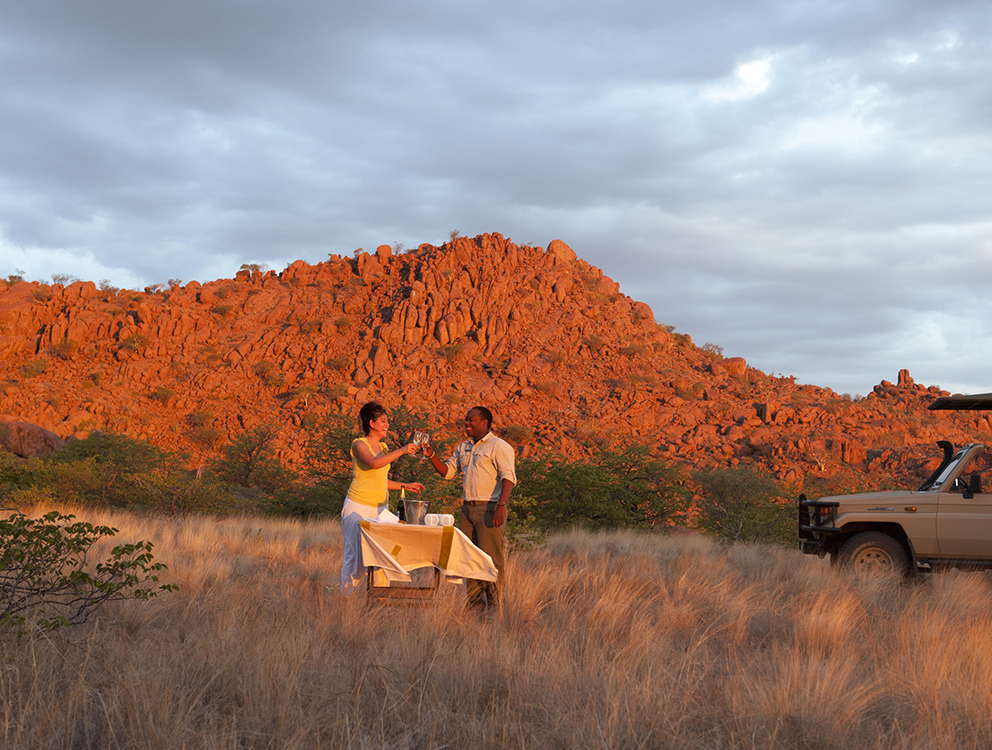
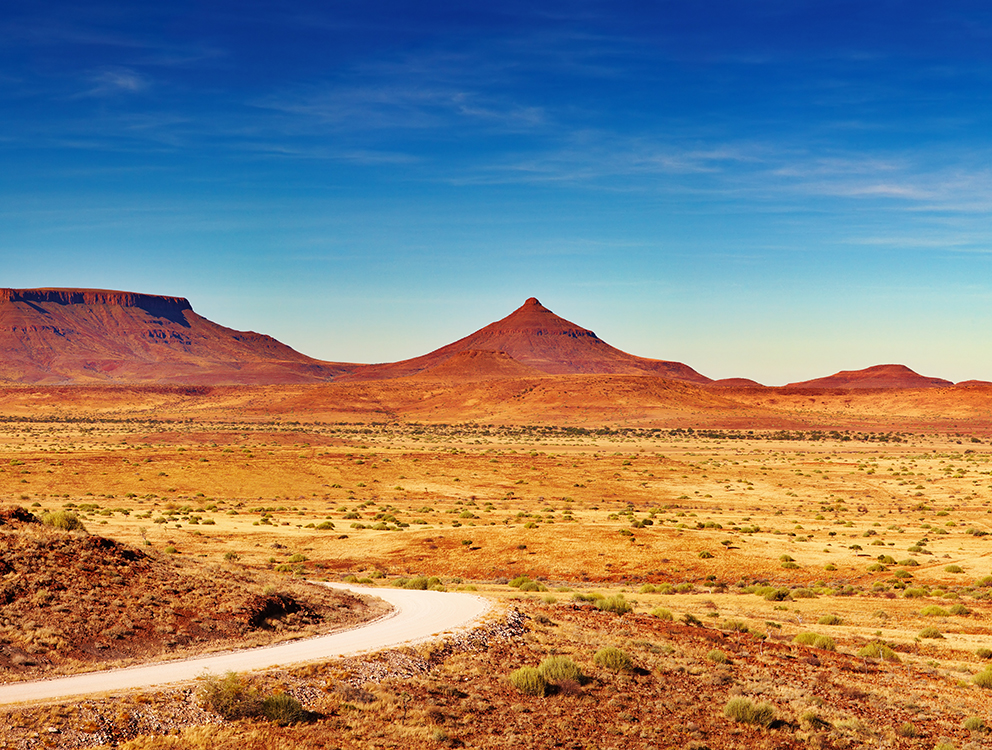
Day 6
FLY TO SKELETON COAST PARK BOUNDARY
This morning you will be transferred to the local airstrip in time for your scheduled light aircraft flight to Hoanib Skelton Coast Camp. On arrival at the airstrip you will be met by your local lodge guide who will transfer you along a scenic route to reach the secluded Hoanib Skeleton Coast Camp. Your days will be filled with exciting activities lead by your local lodge guide – these include nature walks, game drives, use of hides, exploratory day excursions with picnic lunches and coastal visits exposing the astonishing desert-adapted wildlife, plants and birdlife of the area.
The new Hoanib Skeleton Coast camp is located on the border of the Skeleton Coast National Park in the new concession on the Hoanib River, in one of the most remote parts of the Kaokoveld. The Kaokoveld is a land of rugged scenery, mountains, vast plains, and dry riverbeds inhabited by incredible desert-adapted plant and animal life. Here, despite the arid environs, elephant thrive along with giraffe, antelope, lion, leopard and cheetah. The exclusive camp, comprising just seven twin-bedded tents and one family unit, is a Classic Camp with all the attendant luxuries and amenities.
One can look forward to unraveling the enigmatic history of the original Strandlopers (“Beachcombers”), their stone circles lying in hidden valleys, marveling at the ancient Welwitschia plant, following herds and other wildlife, and savouring the endless landscapes unfolding untouched for hundreds of kilometers.
Overnight Hoanib Skeleton Coast Camp
Day 7
SKELETON COAST NATIONAL PARK BOUNDARY
Today is spent on activities as arranged by the camp, exploring this remarkable area with local guides. The activities include exciting game drives searching for desert adapted wildlife, guided walks to hide platforms and hiking trails and afternoon drives.
Overnight Hoanib Skeleton Coast Camp
Day 8
SKELETON COAST NATIONAL PARK BOUNDARY
This morning after breakfast you can enjoy a memorable activity into the Skeleton Coast National Park, boarding a light aircraft to enjoy a scenic flight to the coast before landing on the beach. From here you continue in a safari vehicle exploring the majestic coastline as offered by the camp. After a picnic lunch on the beach and some further exploration you will be flown back to Hoanib Skeleton Coast Camp with enough time to relax and enjoy a ‘sundowner’.
Overnight Hoanib Skeleton Coast Camp
Day 9
FLY TO ONGAVA RESERVE
After a leisurely breakfast you will be transferred back to the local airstrip in time for your scheduled light aircraft flight to Little Ongava situated in the Ongava Private Nature Reserve on the southern boundary of the Etosha National Park. On arrival you will be met by a representative of Ongava who will transfer you to Little Ongava where you will stay for the next two nights.
Let the game viewing really begin! You will start with an afternoon game drive on the private Ongava Game Reserve (as run by Little Ongava), returning to the lodge in time for dinner. The rest of the evening can be spent watching game come and go from the lodge’s floodlit waterhole.
The Ongava Game Reserve is effectively a private game reserve, spanning 30,000 hectares along the south-west border of Etosha National Park. The reserve is home to a wide variety of game including lion, leopard, giraffe, rhino, Hartmann’s mountain zebra, gemsbok (oryx), kudu, steenbok and much more. The scenery is attractive with large open plains blending into Mopane tree woodlands and granite outcrops.
Little Ongava is perched on the crest of a rocky outcrop within the private 30,000ha Ongava Game Reserve, commanding magnificent vistas over the plains and rocky hills of the reserve. Exclusive without being indulgent, Little Ongava offers an extraordinary base from which to enjoy the wonders of Etosha National Park. Anticipate a warm welcome at this intimate and exclusive lodge, with only three spacious, private and luxurious suites each with its own plunge pool, en–suite bathroom, outdoor ‘sala’ daybed, and outdoor shower.
The main dining and lounge area provides a wonderful view of the waterhole below the camp and lends itself to relaxed, stylish dining under an African sky or under thatch. Exciting game drives, visits to hides that overlook the waterhole and walks with experienced guides can all be enjoyed exclusively on the private Ongava Game Reserve. The Ongava Game Reserve features all the characteristic wildlife of the area, with both black and white rhino to be seen as well as lion. Guests at Little Ongava share a dedicated guide and specially modified game-viewing vehicle, ensuring the best possible nature experience at one of Africa’s great wildlife destinations.
Overnight Little Ongava

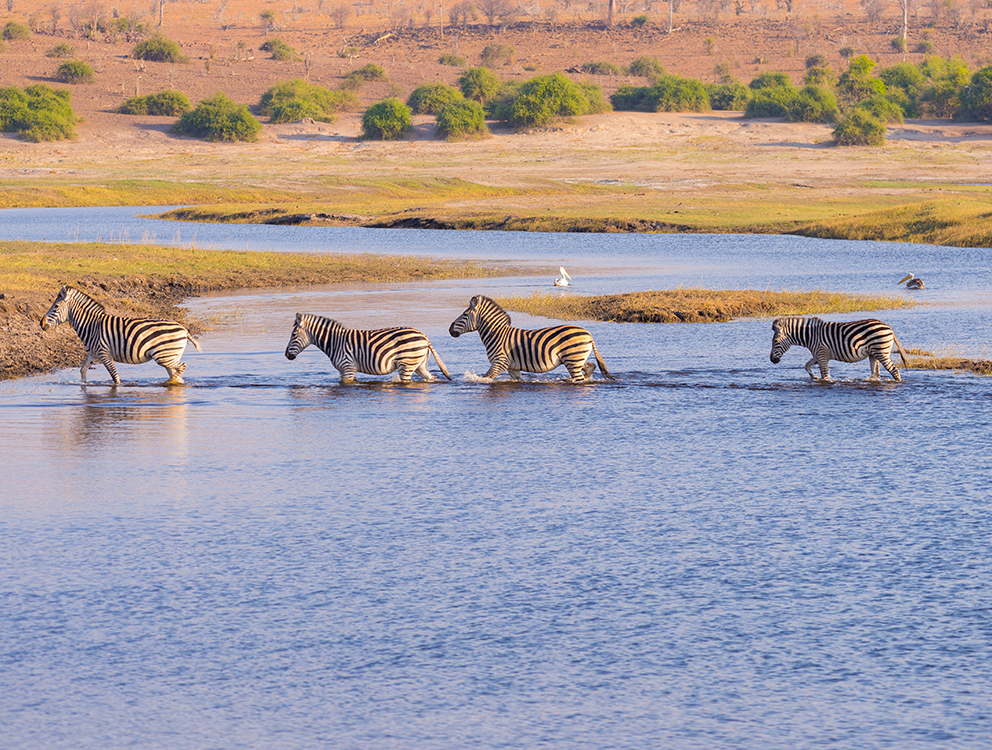
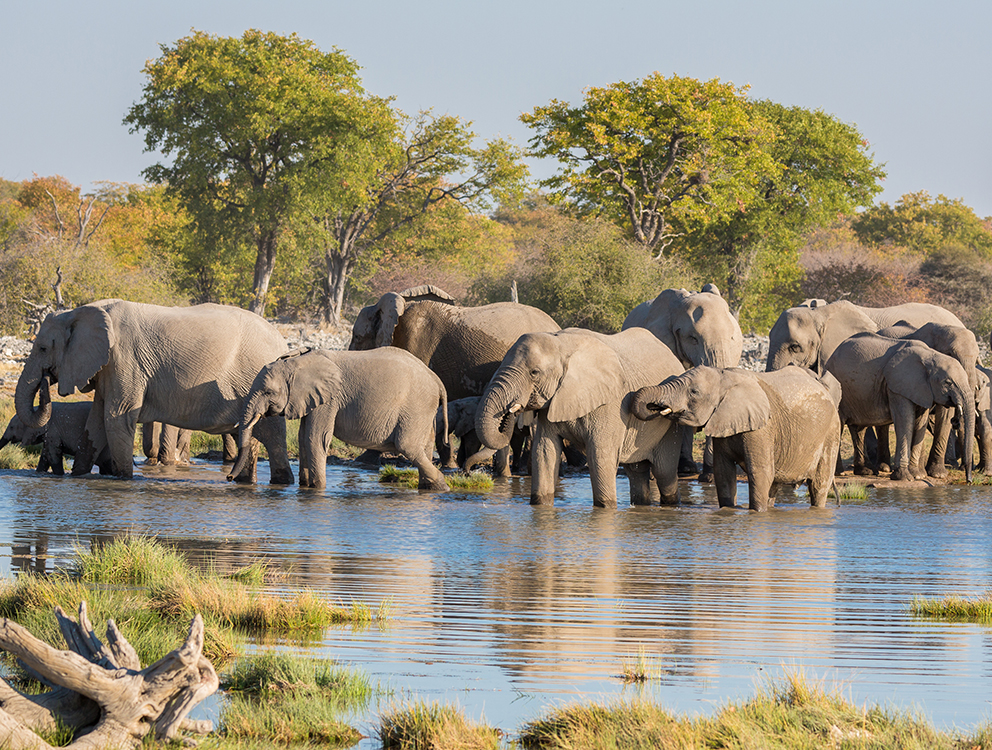
Day 10
ETOSHA NATIONAL PARK
Today you will be treated to an exciting morning guided game drive into the southwestern side of Etosha National Park, returning to Little Ongava for a late lunch and time to relax by your refreshing pool and sala before you head out for an afternoon game drive on the private Ongava Reserve.
Etosha National Park covers 22,270km², of which approximately 5,000km² is made up of saline depressions or ‘pans’. The largest of these pans, the Etosha Pan, can be classified as a saline desert in its own right. The Etosha Pan lies in the Owambo Basin, on the north-western edge of the Namibian Kalahari Desert. Until three million years ago it formed part of huge, shallow lake that was reduced to a complex of salt pans when the major river that fed it, the Kunene, changed course and began to flow to the Atlantic instead. If the lake existed today, it would be the third largest in the world. Etosha is the largest of the pans at 4,760km² in extent. It is nowadays filled with water only when sufficient rain falls to the north in Angola to induce floods to flow southward along the Cuvelai drainage system. The Park consists of grassland, woodland and savannah. Game-viewing centers around the numerous springs and waterholes where several different species can often be seen at one time. The Park boasts some 114 mammal and over 340 bird species. Wildlife that one might see includes elephant, lion, giraffe, wildebeest, eland, kudu, gemsbok (oryx), zebra, rhino, cheetah, leopard, hyena, honey badger, and warthog, as well as the endemic black faced impala.
Overnight Little Ongava
Day 11
Fly to Windhoek
This morning, after breakfast, you will have some time to relax and explore the local area before your local guide will drop you off at the local airstrip for your scheduled light aircraft flight to Eros Airport in Windhoek. You fly in a south eastern direction stopping off to refuel before continuing on to Windhoek. Upon arrival at Eros airport you will be met by a representative who will be transferring you to The Olive Exclusive for your final night’s stay in Windhoek. The rest of the afternoon is spent at leisure. Dinner tonight can be had at the in house restaurant.
Overnight The Olive All-Suite Hotel
Day 12
Departure
This morning you be will collected from the Olive and transfer you to the International Airport in time for you to catch your outgoing international flight back home.
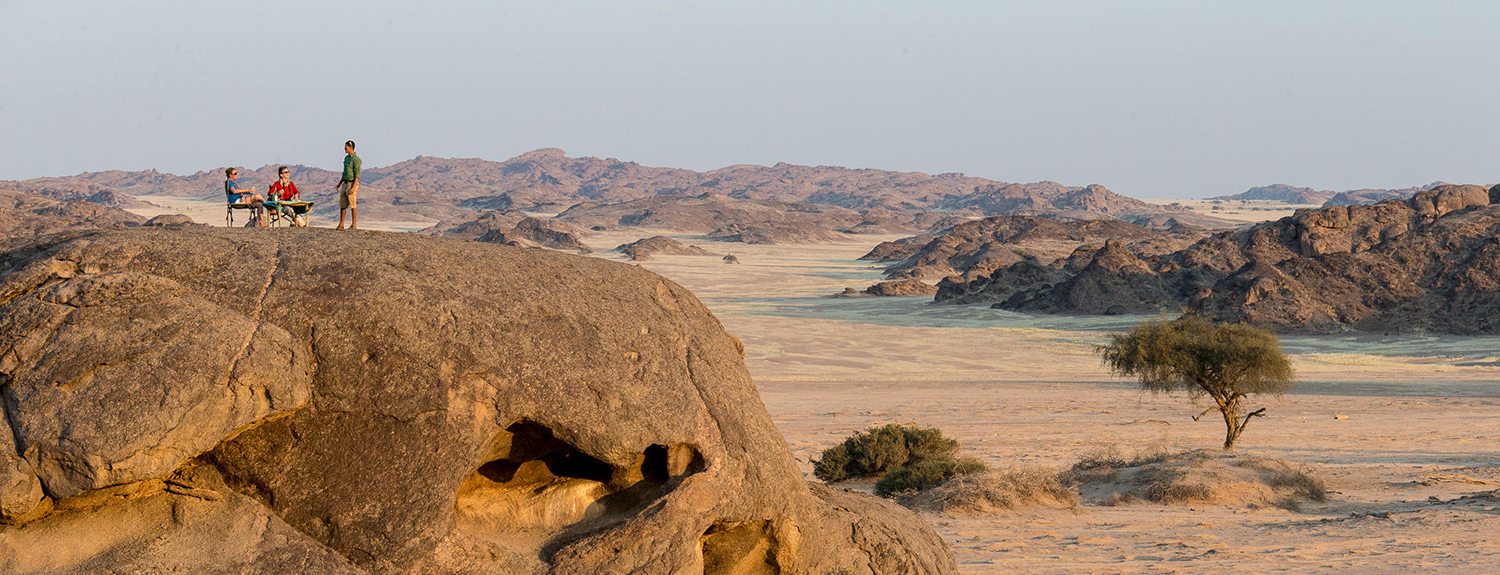
 Heather Wainer and Lou Weidt
Heather Wainer and Lou Weidt
